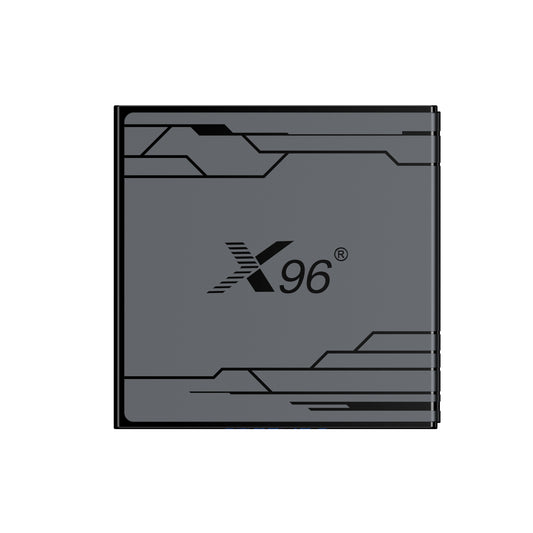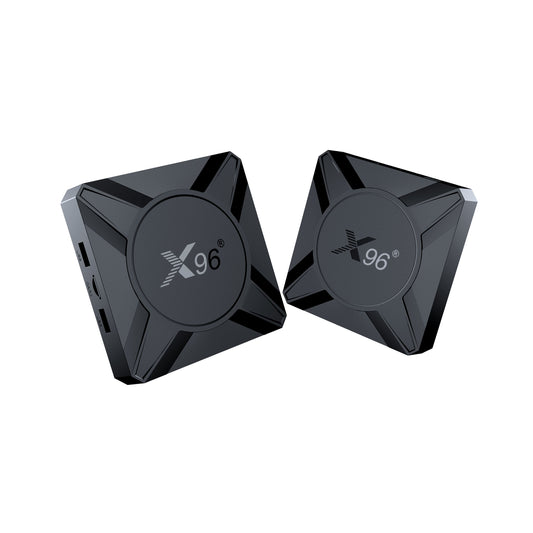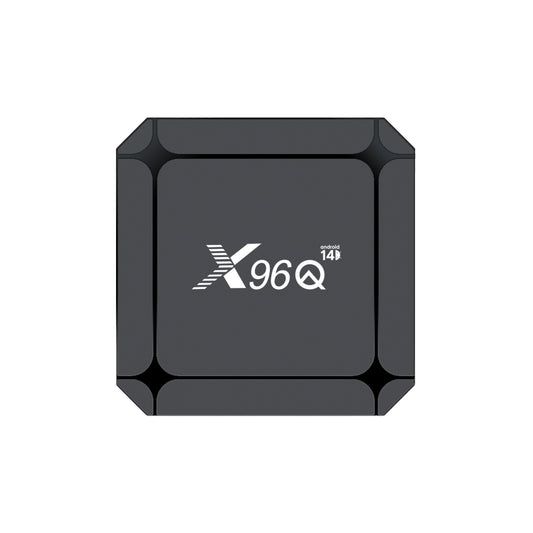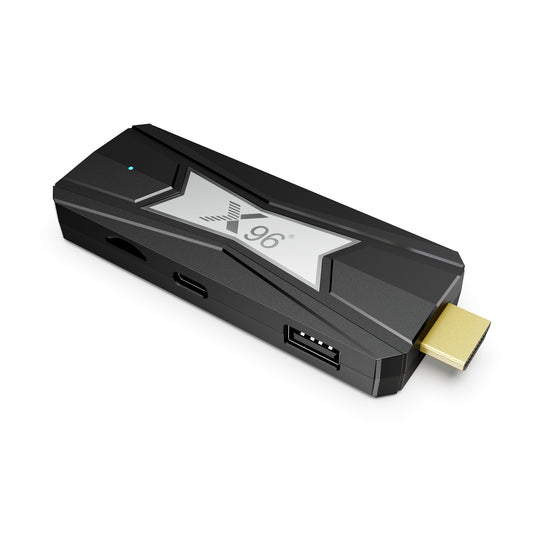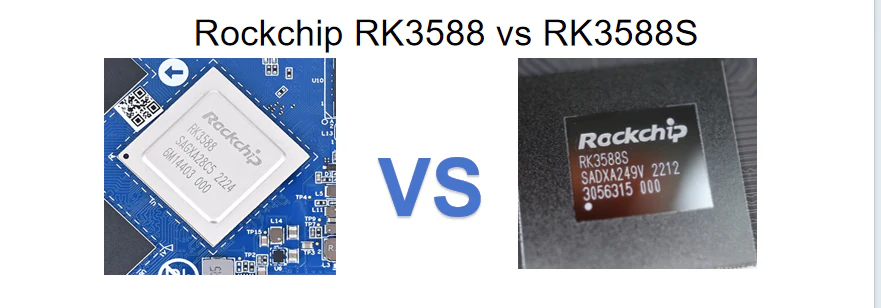
RK3588 VS RK3588S: A Comprehensive Comparison of Performance and Cost-Effectiveness
When comparing RK3588 vs RK3588S, the key differences lie in performance, cost, and application focus. The RK3588 is designed for high-performance tasks like AI computing and 8K video processing, making it ideal for advanced, feature-rich projects. In contrast, the RK3588S is a more affordable, energy-efficient option, suited for budget-conscious applications that don’t require as much processing power. Choosing between RK3588 and RK3588S depends on your project’s specific needs for performance, features, and cost.
1.RK3588 vs RK3588S Specs
When it comes to selecting the right processor, understanding the differences between these two options is crucial. Both are designed to deliver exceptional performance, but they cater to varying use cases and priorities. To make your decision easier, we’ve prepared a detailed comparison table highlighting their key features and distinctions.
| Specification | RK3588 | RK3588S |
| CPU | Quad-core ARM Cortex-A76 and Quad-core Cortex-A55 | 4x Cortex-A76 and 4x Cortex-A55 cores in dynamIQ configuration |
| AI Accelerator | 6 TOPS (Supports int4/int8/int16/FP16/BF16/TF32) | 6 TOPS NPU 3.0 (Neural Processing Unit) |
| GPU | Arm Mali-G610 GPU with OpenGL ES 3.2, OpenCL 2.2, and Vulkan 1.2 support | Arm Mali-G610 MP4 “Odin” GPU with support for OpenGLES 1.1, 2.0, and 3.2, OpenCL up to 2.2 and Vulkan1.2 2D graphics engine up to 8192×8192 source, 4096×4096 destination |
| VPU | 8Kp60 video decoder for H.265/VP9 codecs 8Kp30 video decoder for H.264 codec 4Kp60 video decoder for AV1 codec Multi-channel decoder in parallel |
8Kp60 H.265, VP9, AVS2 8Kp30 H.264 AVC/MVC 4Kp60 AV1 1080p60 MPEG-2/-1, VC-1, VP8 Real-time 8Kp30 encoding with H.265/H.264; multi-channel encoding supported at lower resolutions |
| Memory I/F | 4GB, 8GB, or 16GB LPDDR4x per RK3588 SoC | LPDDR4/LPDDR4x/LPDDR5 up to 32GB |
| Storage | 32GB, 64GB, or 128GB eMMC flash per RK3588 SoC 2.5-inch SATA HDD slot accessible from the front panel |
eMMC 5.1, SD/MMC, 1x SATA 3.0 (multiplexed with PCIe 2.0), FSPI (Flexible SPI) |
| Video | * Real-time video decoder of MPEG-1,MPEG-2,MPEG-4,H.263,H.264,H.265,VC-1,VP9,VP8 MVC,AV1 * MMU Embedded * Multi-channel decoder in parallel for less resolution * H.264 AVC/MVC Main10 L6.0 : 8K@30fps (7680x4320)② * VP9 Profile0/2 L6.1 : 8K@60fps (7680x4320) * H.265 HEVC/MVC Main10 L6.1 : 8K@60fps (7680x4320) * AVS2 Profile0/2 L10.2.6 : 8K@60fps (7680x4320) * AV1 Main Profile 8/10bit L5.3 : 4K@60fps (3840x2160) * MPEG-2 up to MP : 1080p@60fps (1920x1088) * MPEG-1 up to MP : 1080p@60fps (1920x1088) * VC-1 up to AP level 3 : 1080p@60fps (1920x1088) * VP8 version2 : 1080p@60fps (1920x1088) |
2x 1x HDMI 2.1 / eDP 1.3 up to 8Kp60 (Note: 1x in block diagram, but 2x HDMI/eDP are listed in the datasheet) 2x 1x DisplayPort 1.4a up to 8Kp30 (multiplexed with USB 3.0) 2x MIPI DSI output up to 4Kp60 Bt.1120 video output up to 1080p60 Not listed in RK3588S datasheet, but I don’t see why not: Optional dual LVDS up to 1080p60 via RK628 chip. Up to four independent displays (up to 1x 8Kp60, 2x 4Kp60, 1x 1080p60) |
| Video Encoder * Real-time H.265/H.264 video encoding * Support up to 8K@30fps * Multi-channel encoder in parallel for less resolution * Dual 16M Pixel ISP with HDR&3DNR |
48MP (2x 24MP) ISP with HDR and 3D NR support; multi-camera input 2x MIPI DC (4-lane DPHY v2.0 or 3-lane CPHY V1.1) 4x 2-lane MIPI CSI DVP camera interface HDMI Rx 2.0 interface up to 4Kp60 with HDCP 2.3 support (Note: removed from the block diagram, but still listed in the datasheet) |
|
| Audio | I2S0 with 8 channels * Up to 8 channels TX and 8 channels RX path * Audio resolution from 16bits to 32bits * Sample rate up to 192KHz * Provides master and slave work mode, software configurable * Support 3 I2S formats (normal, left-justified, right-justified) * Support 4 PCM formats (early, late1, late2, late3) * Support TDM normal, 1/2 cycle left shift, 1 cycle left shift, 2 cycle left shift, right shift mode serial audio data transfer * I2S, PCM and TDM mode cannot be used at the same time |
2x 8-channel I2S, 2x 2-channel I2S 2x SPDIF 2x 8-channel PDM (for mic arrays) 2-channel digital audio codec (16-bit DAC) VAD engine |
| Networking | 5x Ethernet RJ45 ports WiFI 6 and Bluetooth wireless module |
1x Gigabit Ethernet |
| USB | 2 * USB 2.0 (Host) 1 * USB3.0 (Host) 1 * Type C 3.0 (Download Port) Supported Devices |
1x USB 3.1 Gen 1 OTG up to 5 Gbps (multiplexed with DisplayPort), 1x USB 3.1 Gen 1 host (multiplexed with Combo “PIPE PHY2”), 2x USB 2.0 Host |
2. Rockchip RK3588 & Rockchip RK3588S Common features
- CPU: Both are equipped with 8-core CPU, including 4 Cortex-A76 large cores and 4 Cortex-A55 small cores, with excellent performance.
- GPU: Both use Mali-G610 MP4 GPU, which supports efficient graphics processing and rendering.
- Process technology: Both are manufactured based on 8nm process, with excellent energy efficiency.
- Video capability: Supports 8K decoding and 4K video encoding, which is very suitable for high-resolution multimedia applications.
- Memory support: Supports LPDDR4 and LPDDR5 memory, providing high-speed data transmission performance.
3. RK3588 VS RK3588S Key Differents
When comparing these two processors, it’s clear that each is designed with specific priorities in mind. Whether you’re aiming for maximum performance or striving for cost-efficiency with reliable functionality, understanding their core distinctions is crucial. In this section, we’ll explore the key factors that set the RK3588 apart from the RK3588S, helping you make an informed choice for your next project.
| Feature | RK3588 | RK3588S |
| I/O Interfaces | Equipped with a complete set of high-end interfaces, including PCIe 3.0 and more USB ports | Reduced functionality of interfaces to lower costs |
| PCIe Support | Supports PCIe 3.0 (higher expansion capability) | Supports PCIe 2.1 (lower expansion capability) |
| Supported Memory Capacity | Up to 32GB | Up to 16GB |
| Peripheral Support | Offers more GPIO and external module support | Limited GPIO and peripheral functionalities |
| Target Market | Aimed at the high-end market, suitable for devices requiring high expandability | Focused on cost optimization for the mid-to-low end market |
4. RK3588 VS 3588S Summary
1: Performance and Use Case
The RK3588 is built for high-performance tasks like AI computing and 8K video processing, making it perfect for advanced and demanding projects. In contrast, the RK3588S offers a more affordable option for projects that don’t need as much power, focusing on energy efficiency and cost-effectiveness.
2: Choosing the Right One
If you need maximum power and advanced features, the RK3588 is the better choice. However, if your project prioritizes lower cost and lower energy use, the RK3588S is a smart alternative. Both are strong options, tailored to different needs and budgets

